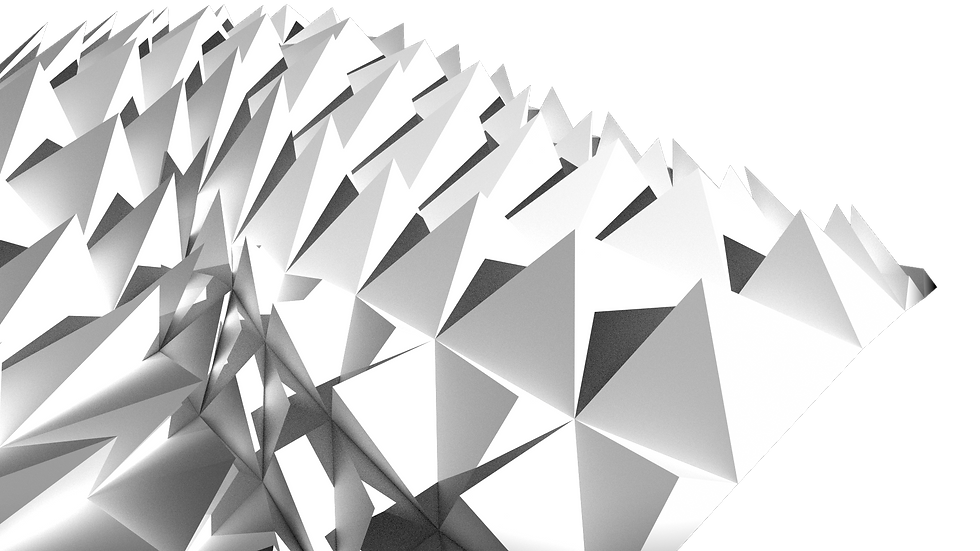Reflection
This module was very different from the previous two in most areas: the working process was iterative rather than sequential, 3D modelling software was involved, there were many more deliverables, etc. It was quite challenging to learn the software and wrap my head around the requirements, however, I have realized the significance of pattern in visual perception. Patterns which form a surface are subjected to the various facets of perception, such as interpretations of depth and shadow. By forming consistent rules for my iterations (e.g. tall pyramids are brighter and so indicate height), the developable surfaces that were produced are a satisfactory reflection of both the painting and terrain sample, with both informing various aspects of the final composite. Considering the process of physically developing the model was also interesting as it gave a real-world aspect to the assignment which would have otherwise been completely conceptual and so harder to connect with.
SAMPLE ANALYSIS
The initial stages of analysing the given painting and terrain sample was very important as it gave the whole module a foundation to work on. With the fabric, there was a very clear curve in the fabric, supported by other smaller curves, creating many pits of shadow. With the terrain, there was also quite a clear axis that formed the terrain, with high ridges highlighted and producing valleys of shadows.


Terrain sample

Painting sample from Madonna di Alzano (1487) by GIovanni Bellini
ITERATIONS
Left: final result (hover/click), right: different iterations (click)
Grid Study
The goal with the grids was to emulate the curve of the fabric. By including many curve attractors and compounding transformations, this effect was achieved as seen by panelling with the default pyramid on the left.
Panel Study
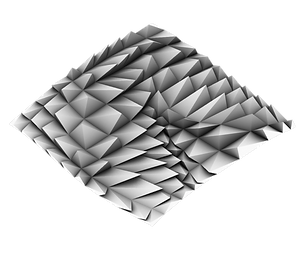


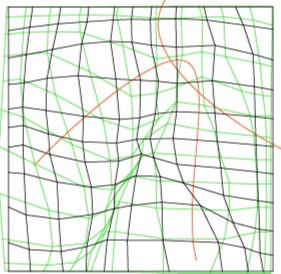

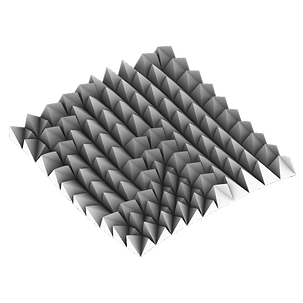
The panels needed to represent the various depths of the fabric so tall pyramids were used to reflect more light, while shorter panels with many subdivisions were used to create shadow and sunken areas. By using 3 panels, a flow from tall to short panels could be formed to reflect the gradual flow of the fabric as well.
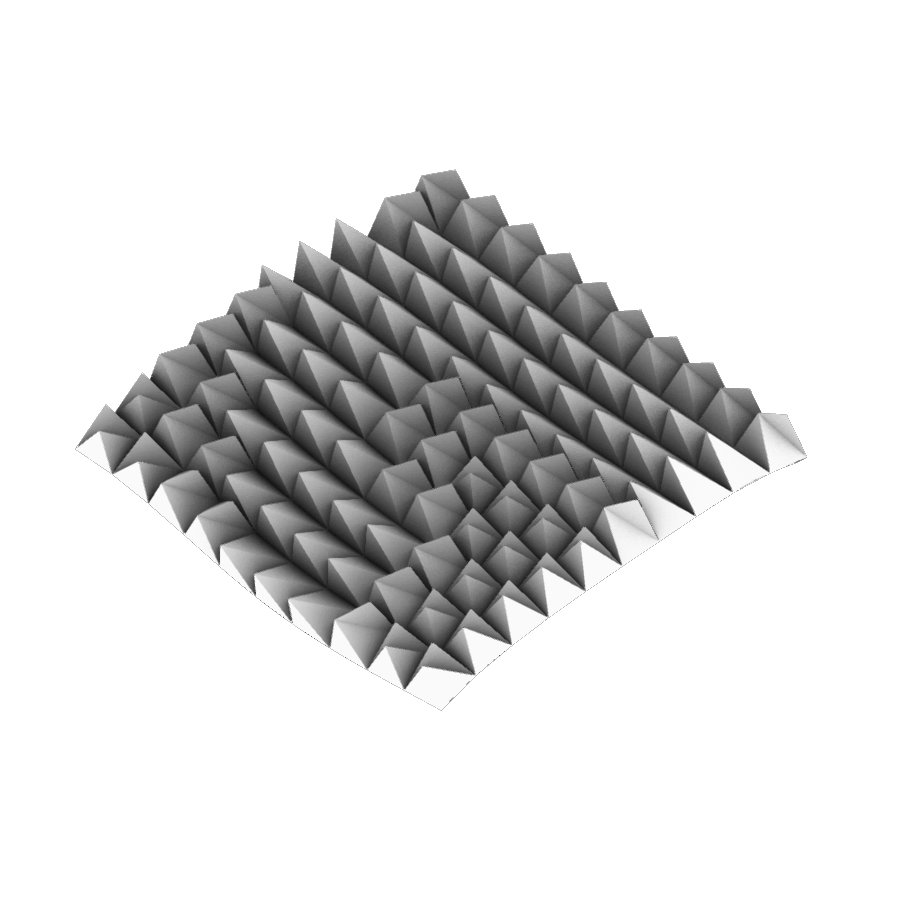
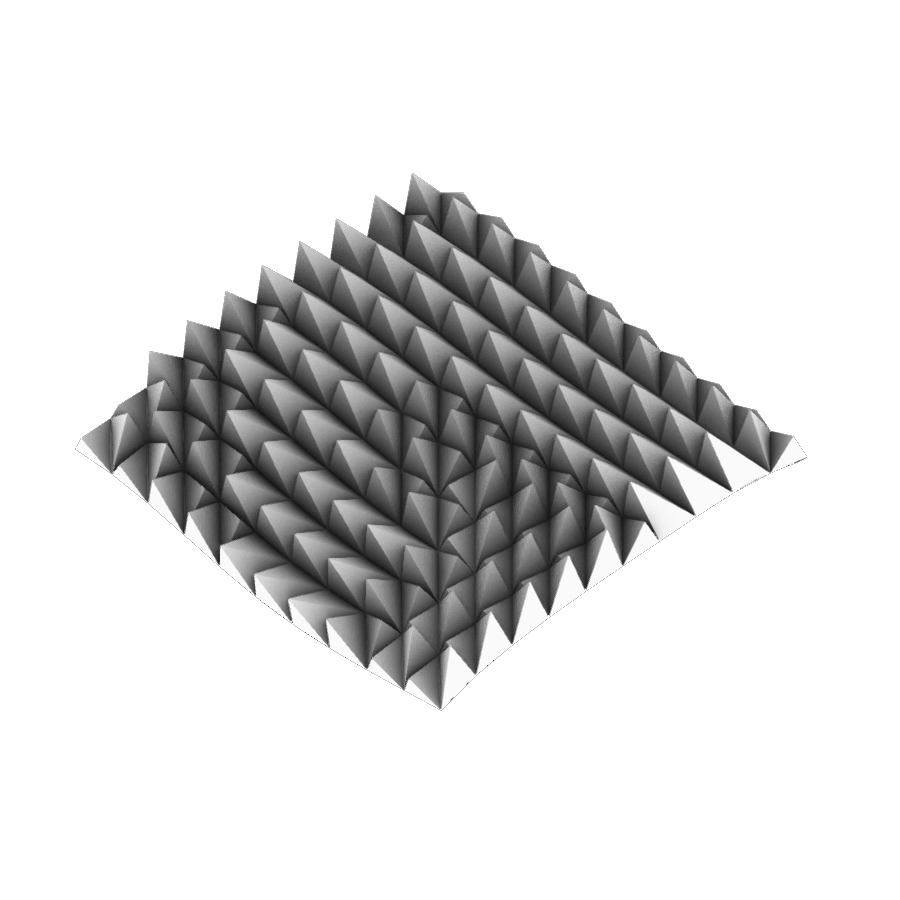


Hybrid Study
Combining the panels with the grids required many more iterations to ensure developability. By slowly changing a variable at a time (attractors, magnitude, panels), I eventually arrived at a satisfactory result that would capture the features of both fabric and terrain well.

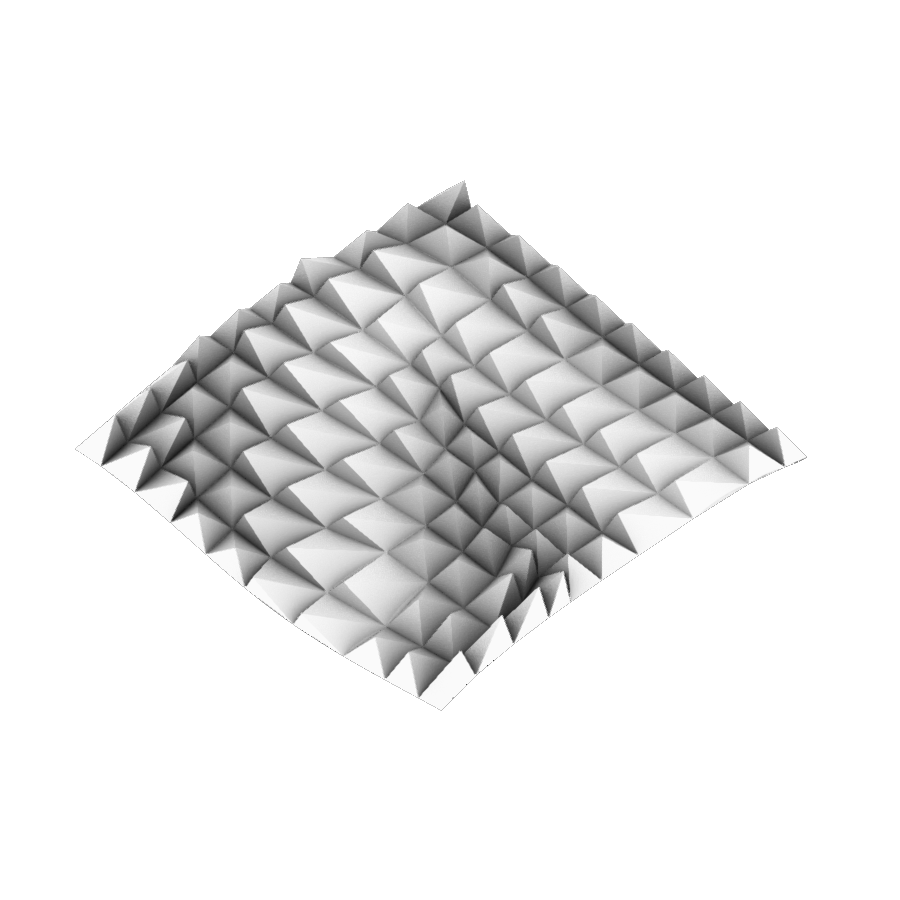
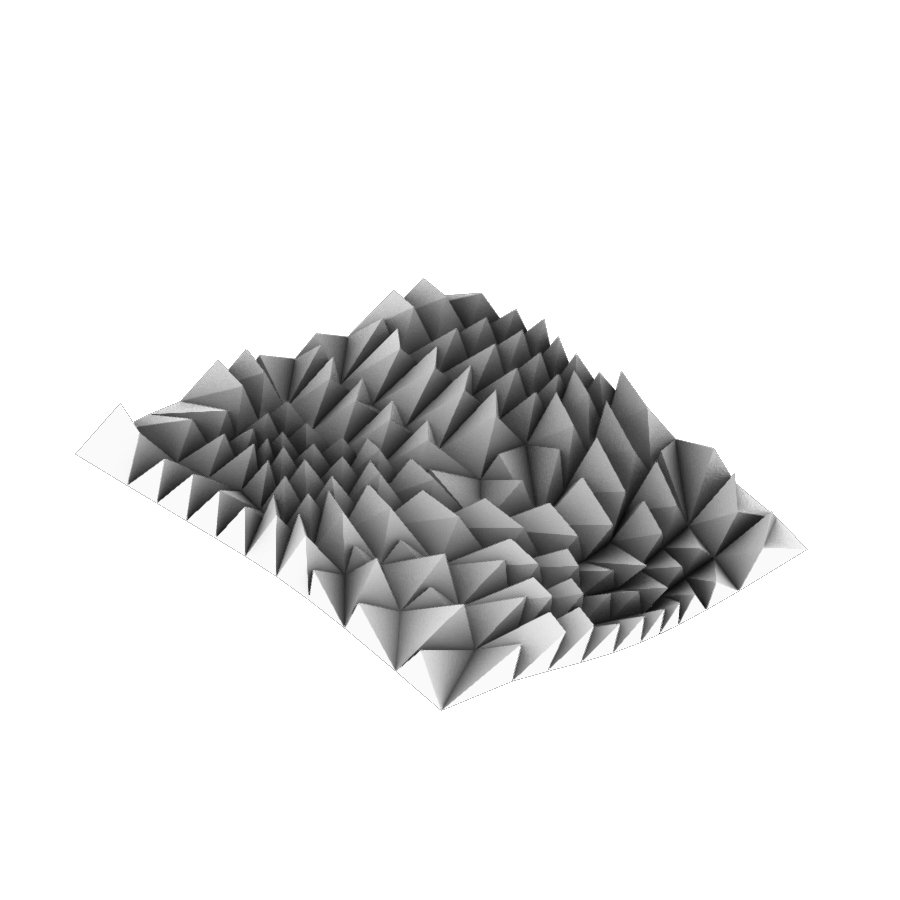
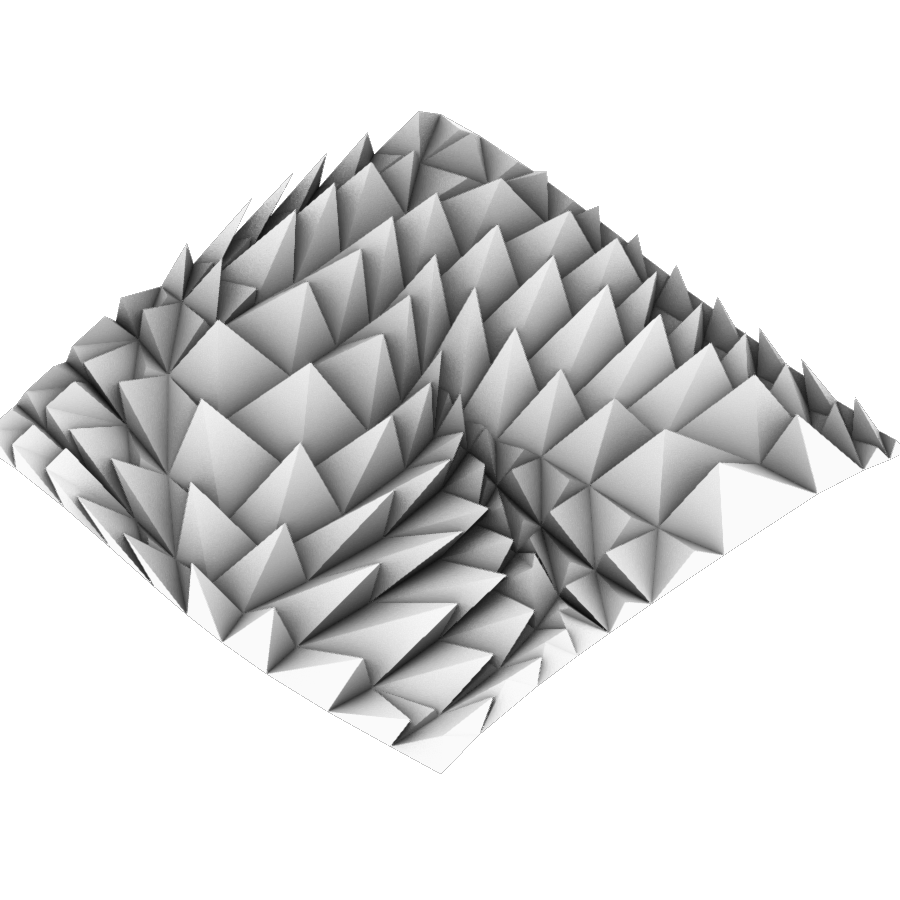

ARTEFACT
The artefact required a lot of careful manipulation to carve out the various tips and recesses. Pulling up areas that are highlighted/high points exaggerated their height, while pulling down darker areas to create deeper valleys emphasized its effect. By stretching the model beyond the boundaries, the edges are disrupted and it opens up the possiblity of exploring beyond the canvas.
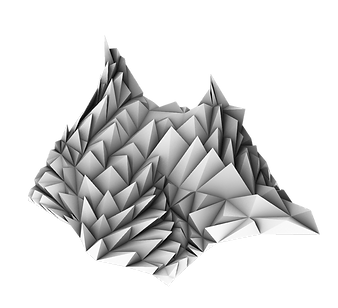
Hover/click to zoom!
COMPOSITE
Hover to see the original painting, click to zoom in!


If the artefact required fine manipulation of panels, the composite required fine manipulation of edge boundaries. Because my artefact extended outside of the painting, I had to extend the painting and give an interpretation of what it could look like beyond the boundary. I also filled in some of the top left background with fabric to make the flow more natural but still keeping to the constraints of my artefact. By transforming the individual patterns, the edge boundaries of the surface were disrupted in order to accomodate this change.
UNROLLING
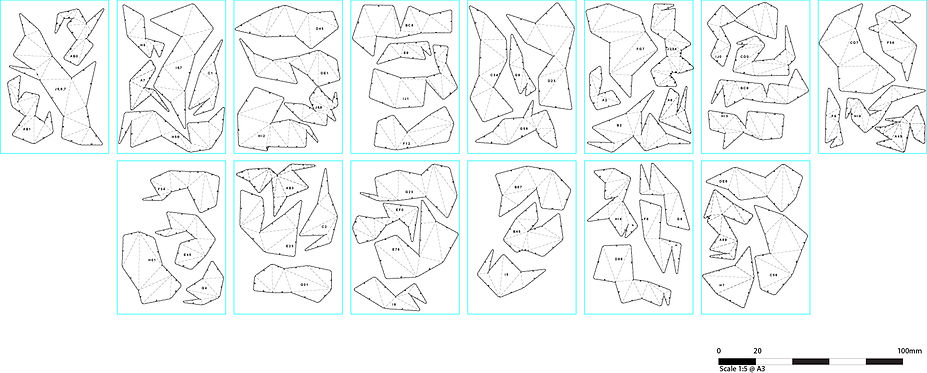
A-J for x-axis, 0-9 for y-axis; Hover/click to zoom!
Unrolling the panels took up the most time just because it was a tedious task and I had to meticulously track the panels which had been unrolled. This was a good exercise to think about the real-world effects of developing the panels physically and to consider the efficiency of materials when arranging the unrolled shapes.
RENDERS
Click the picture to zoom in!

